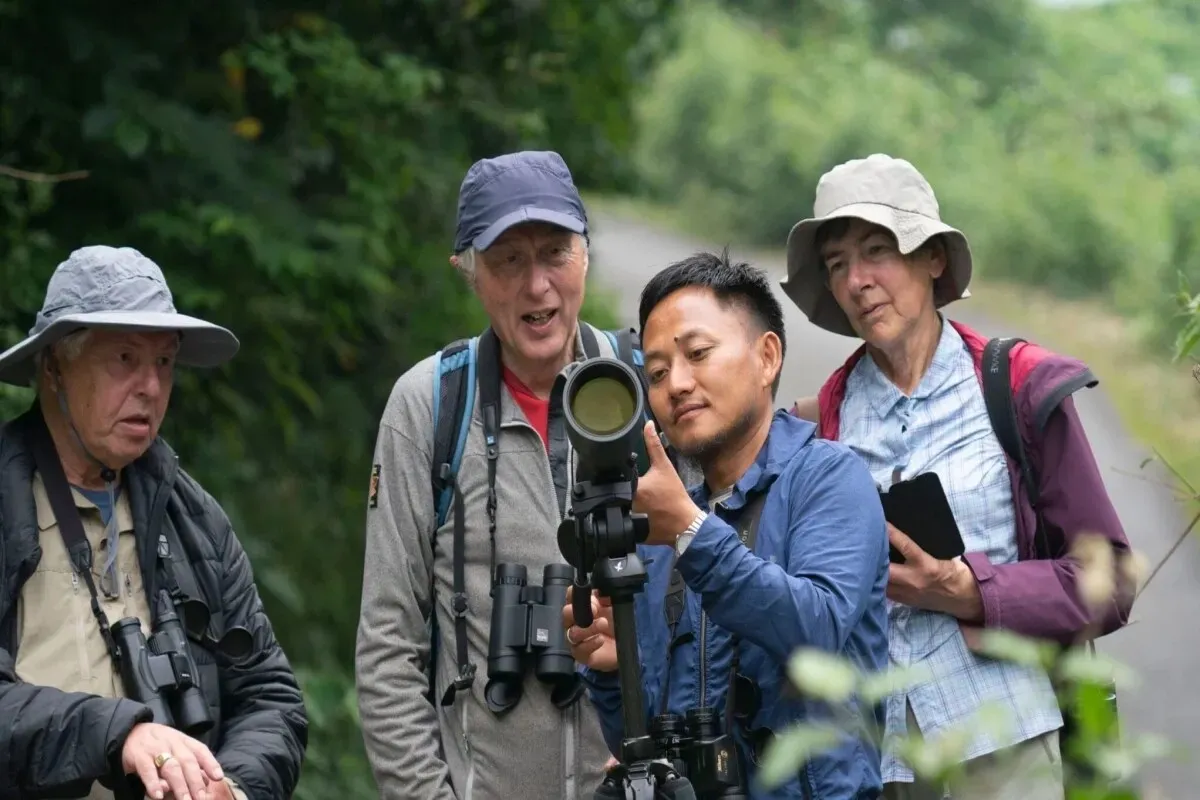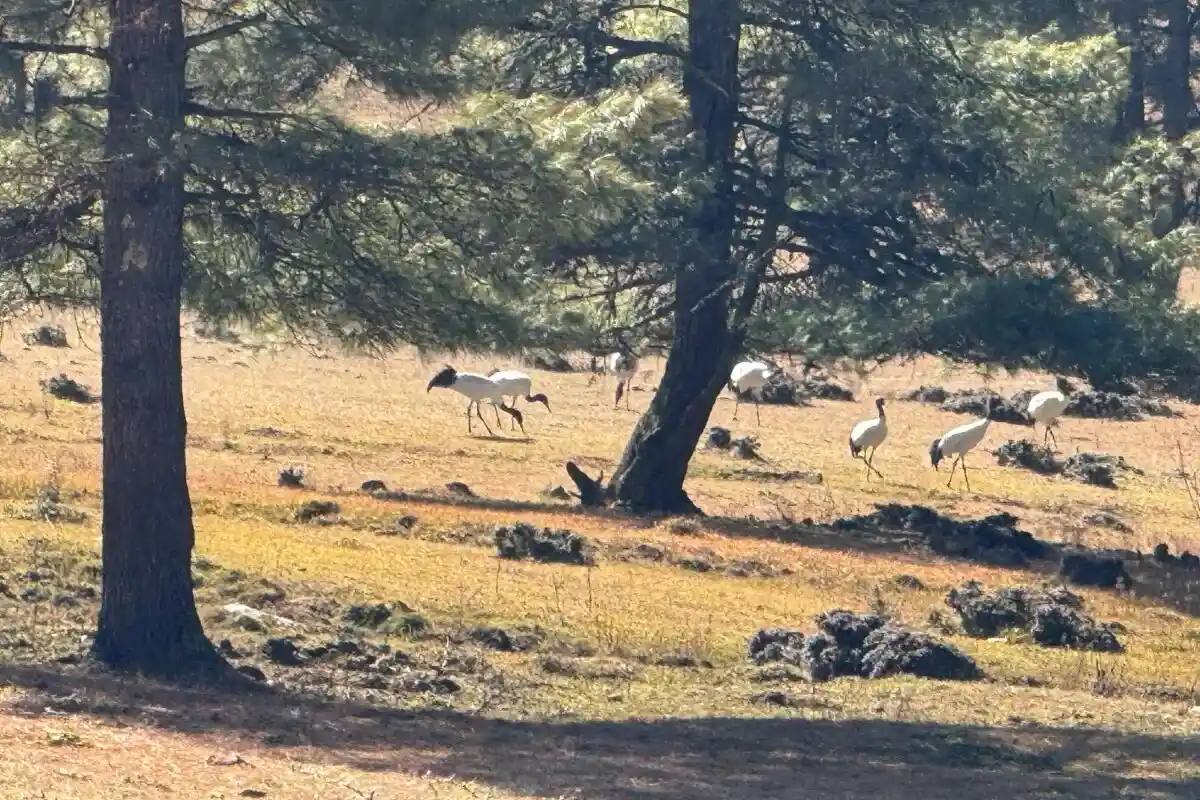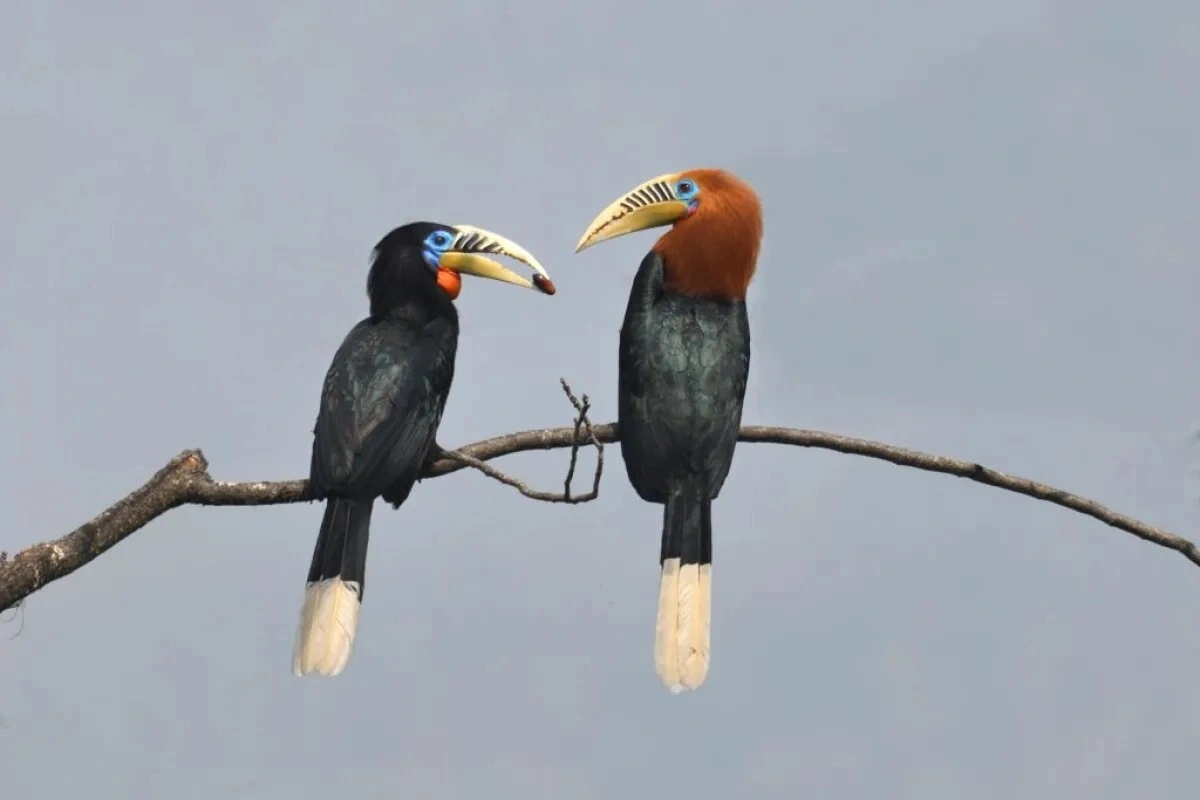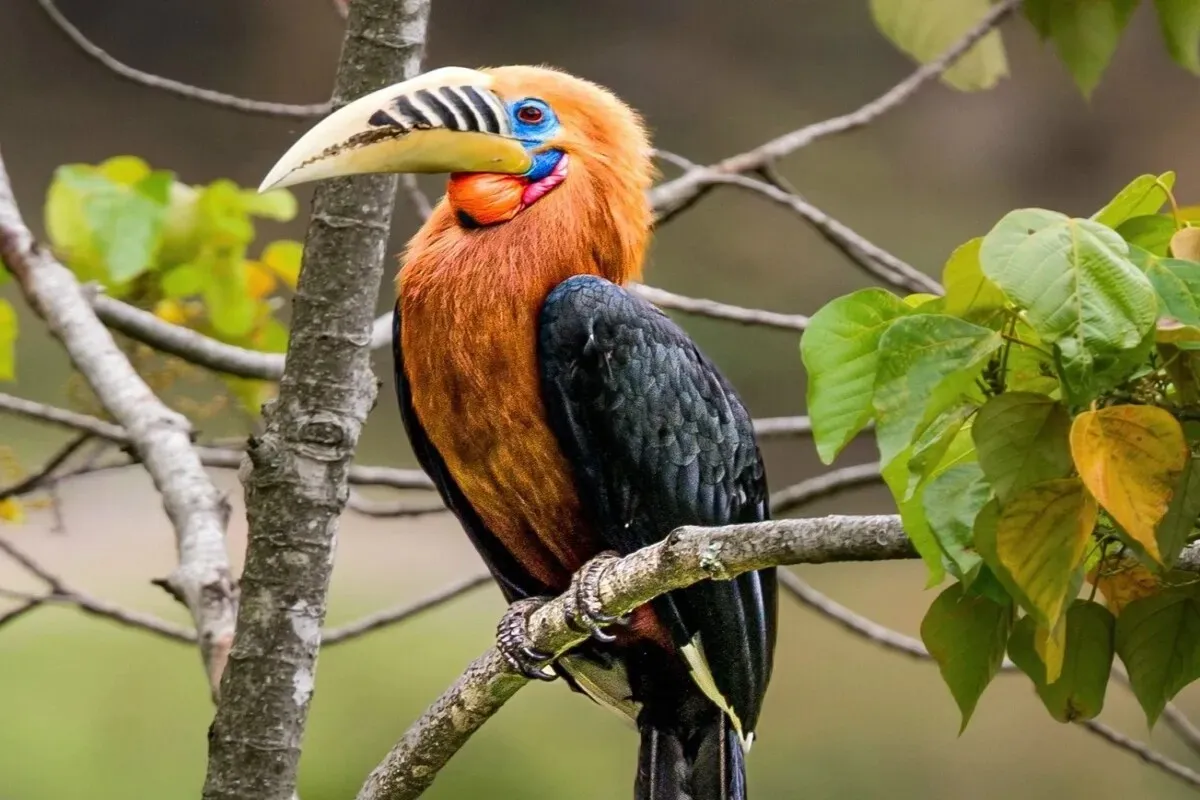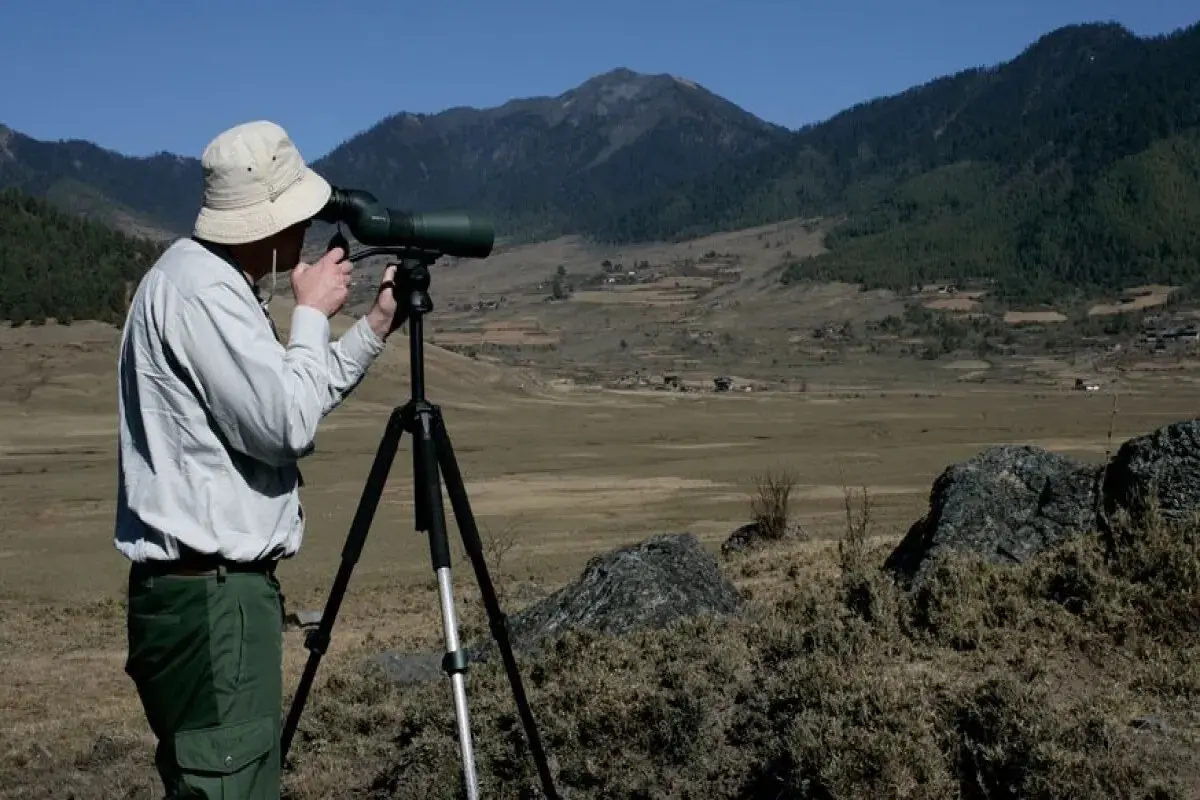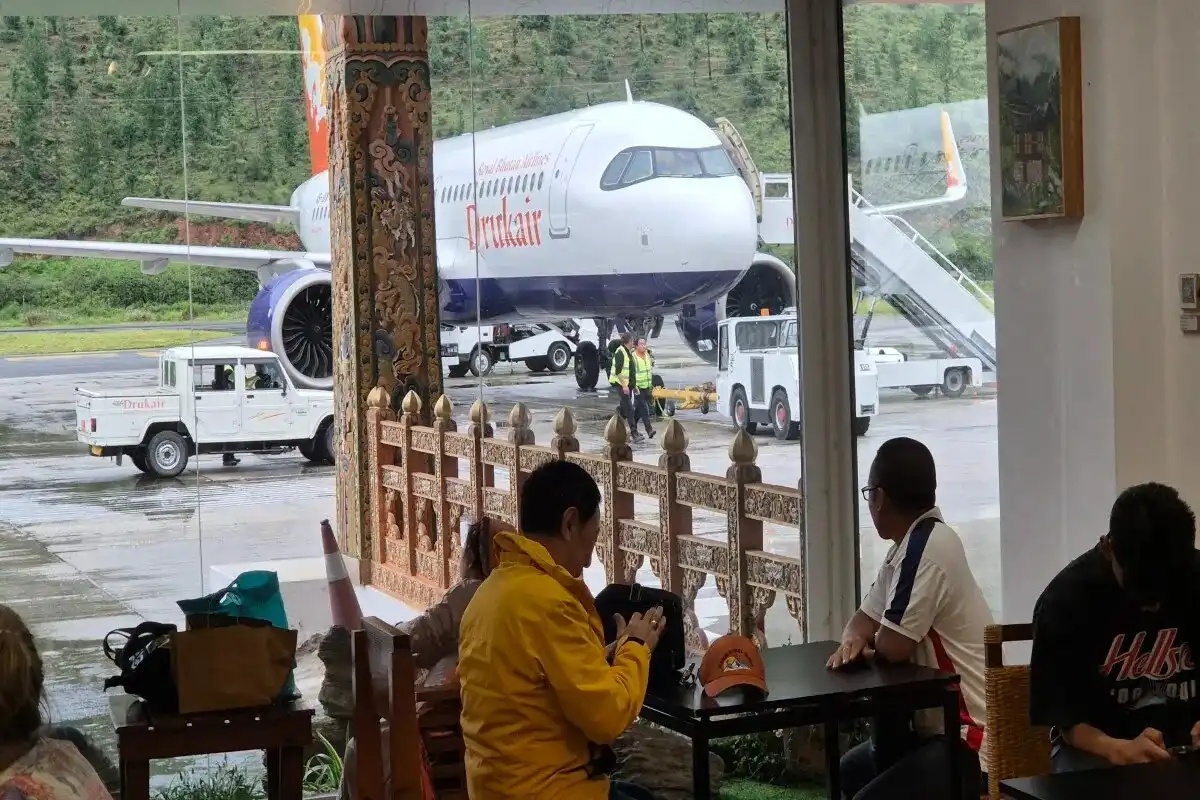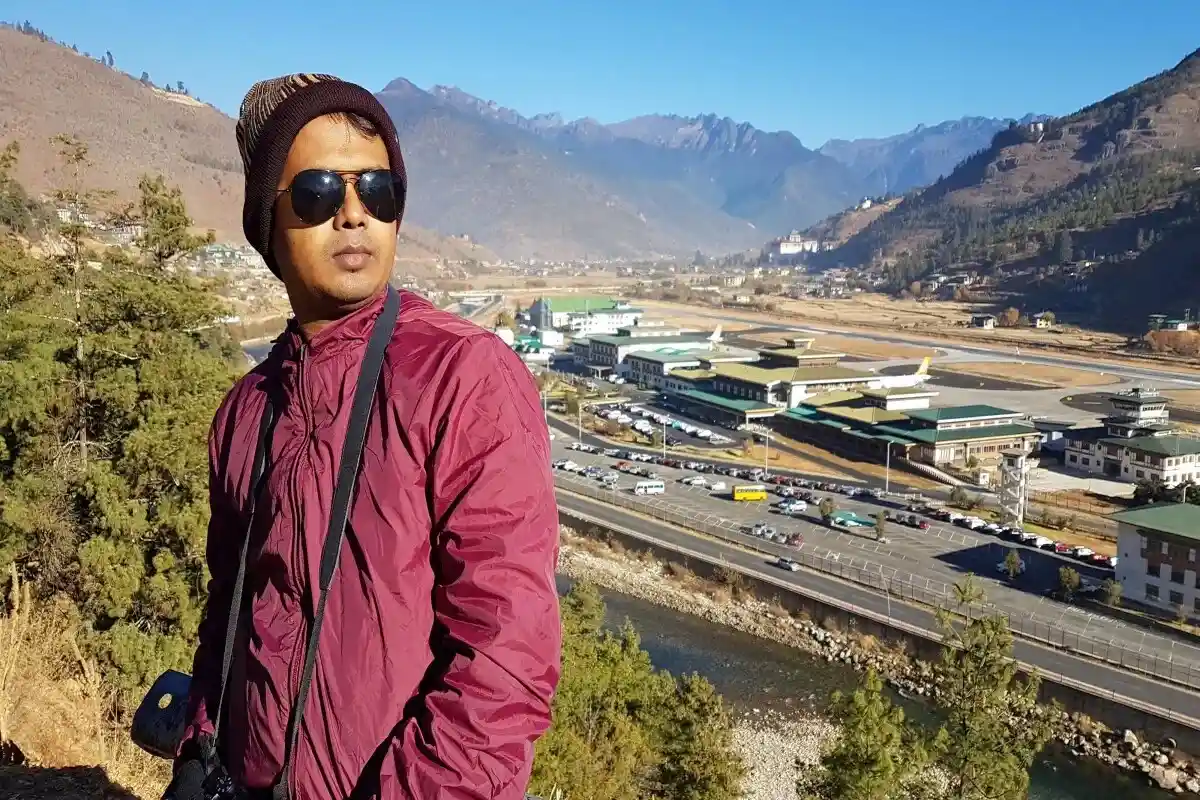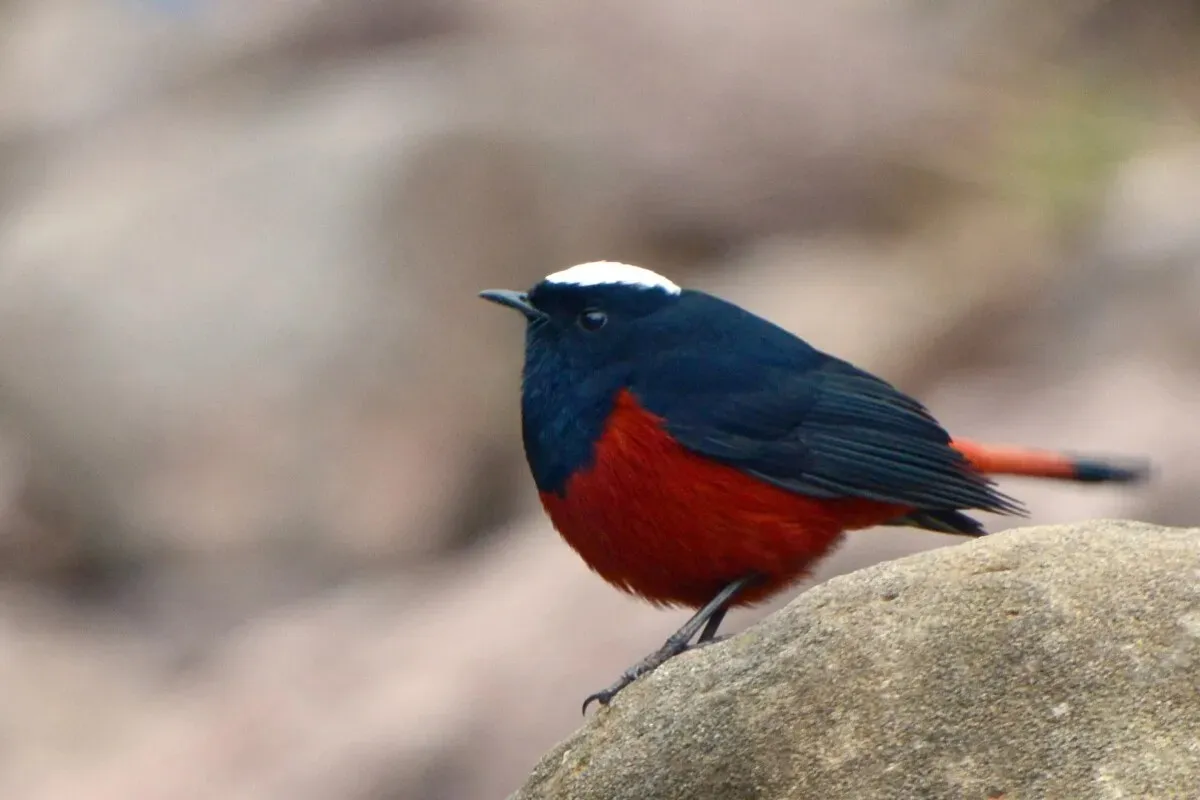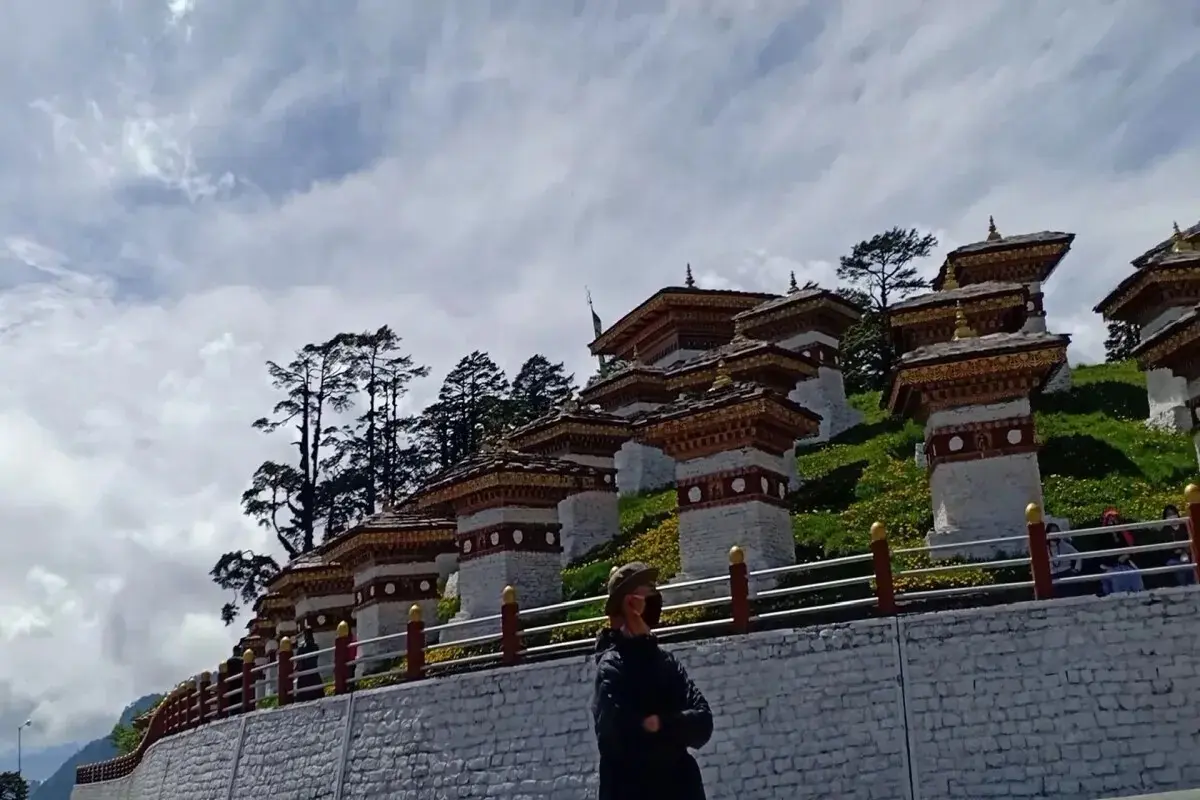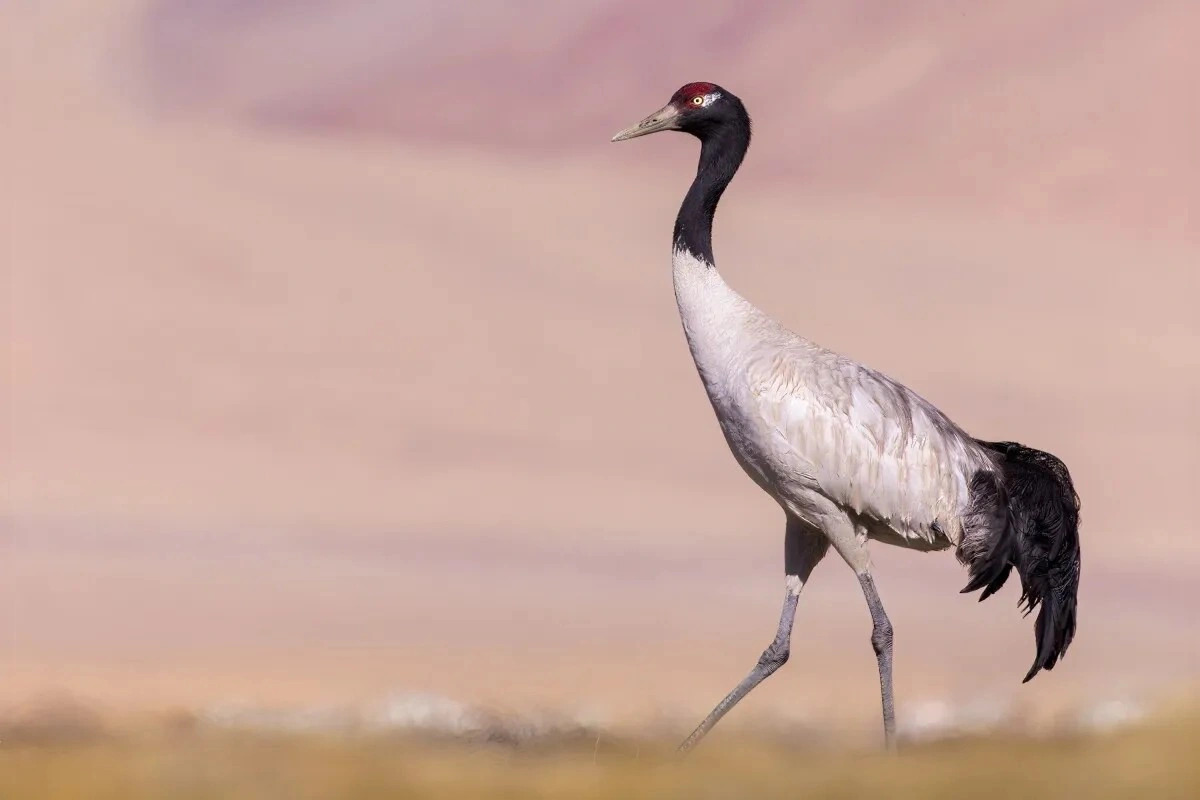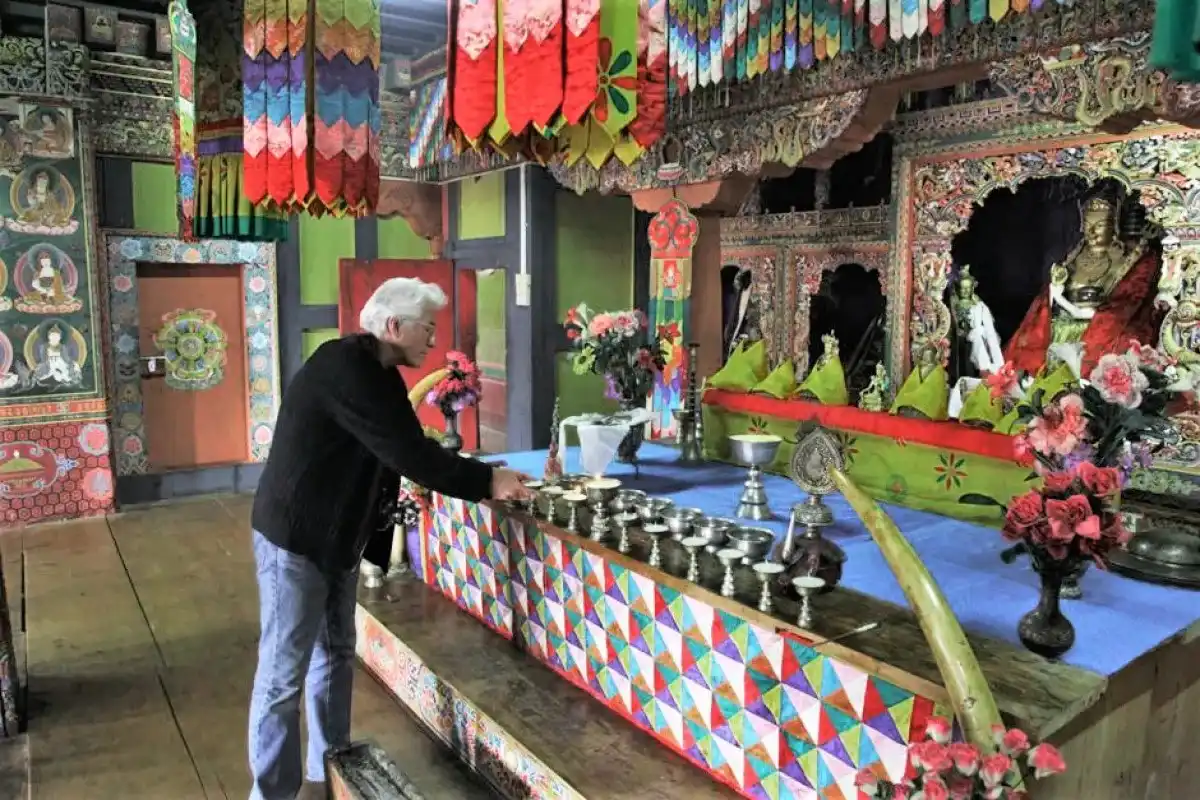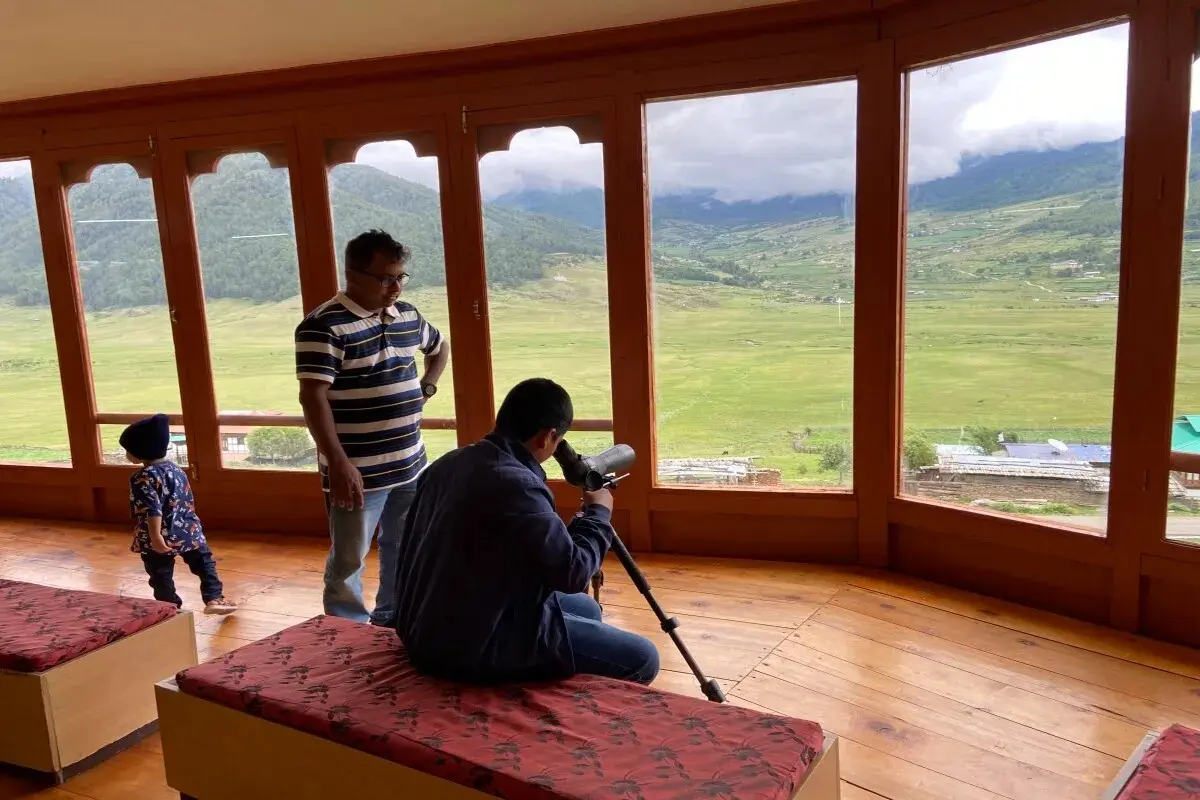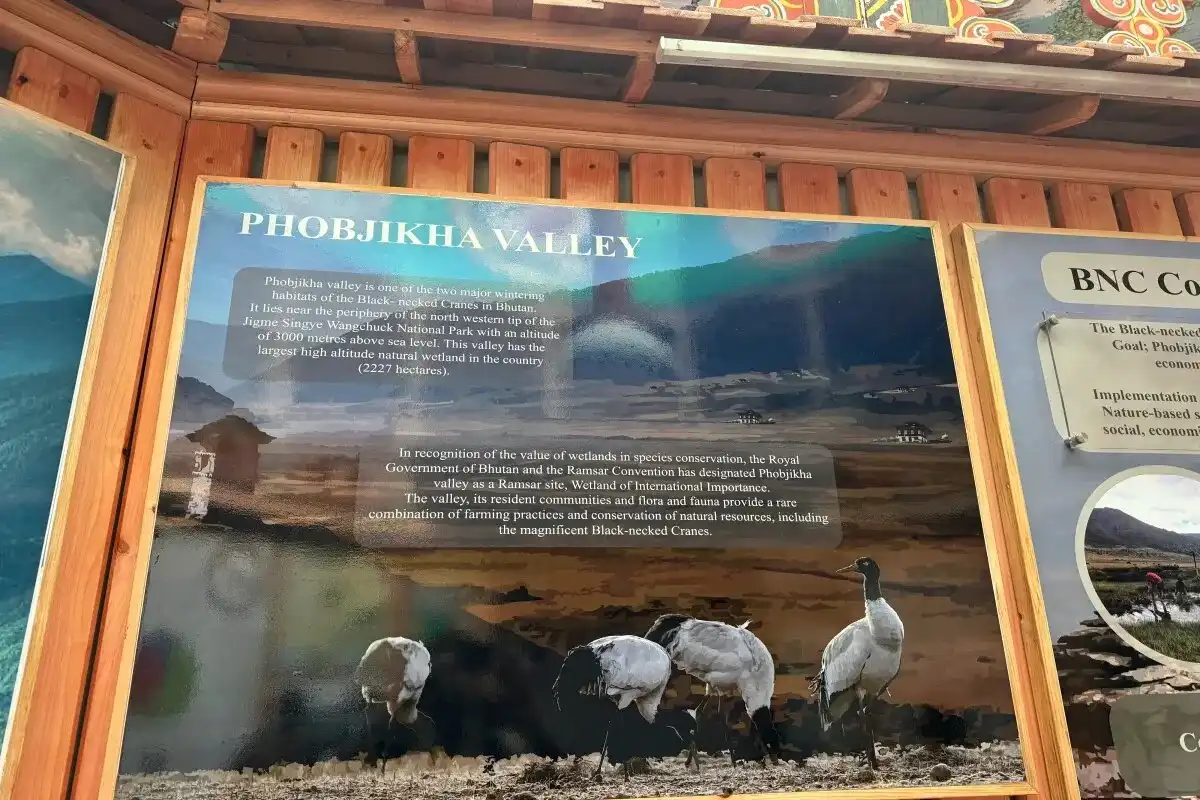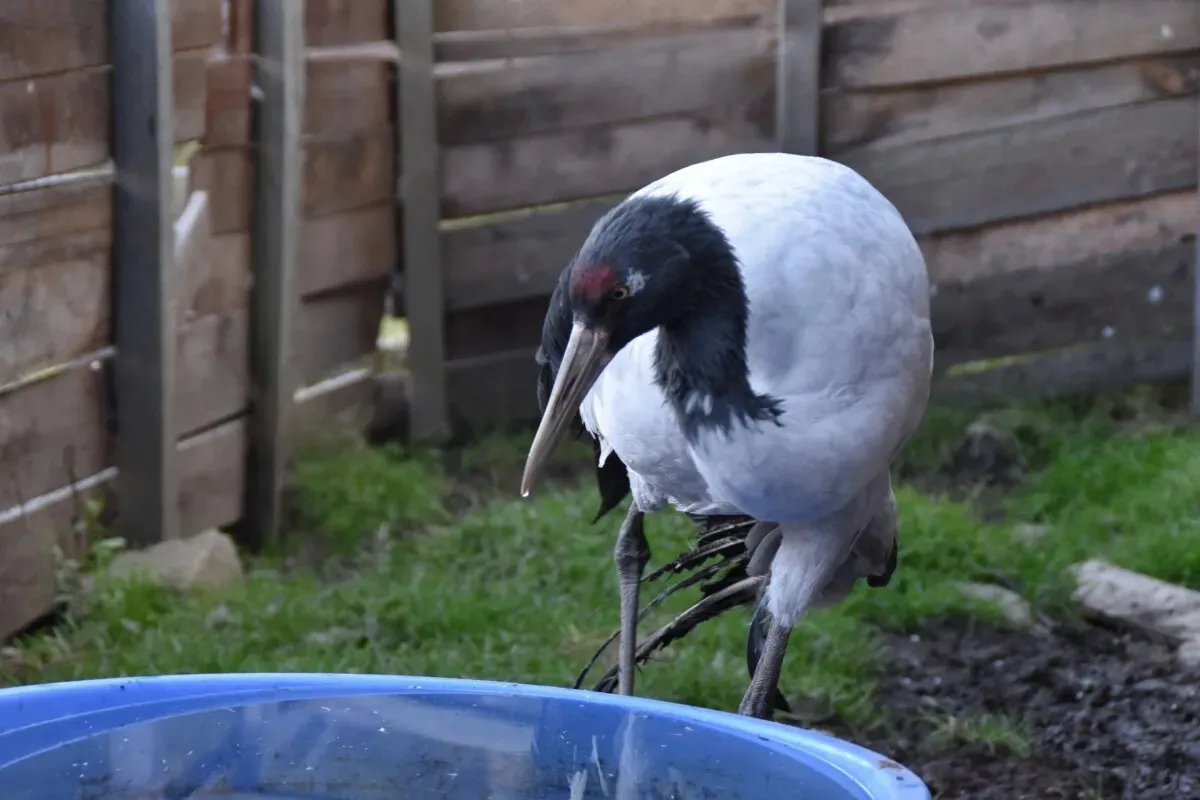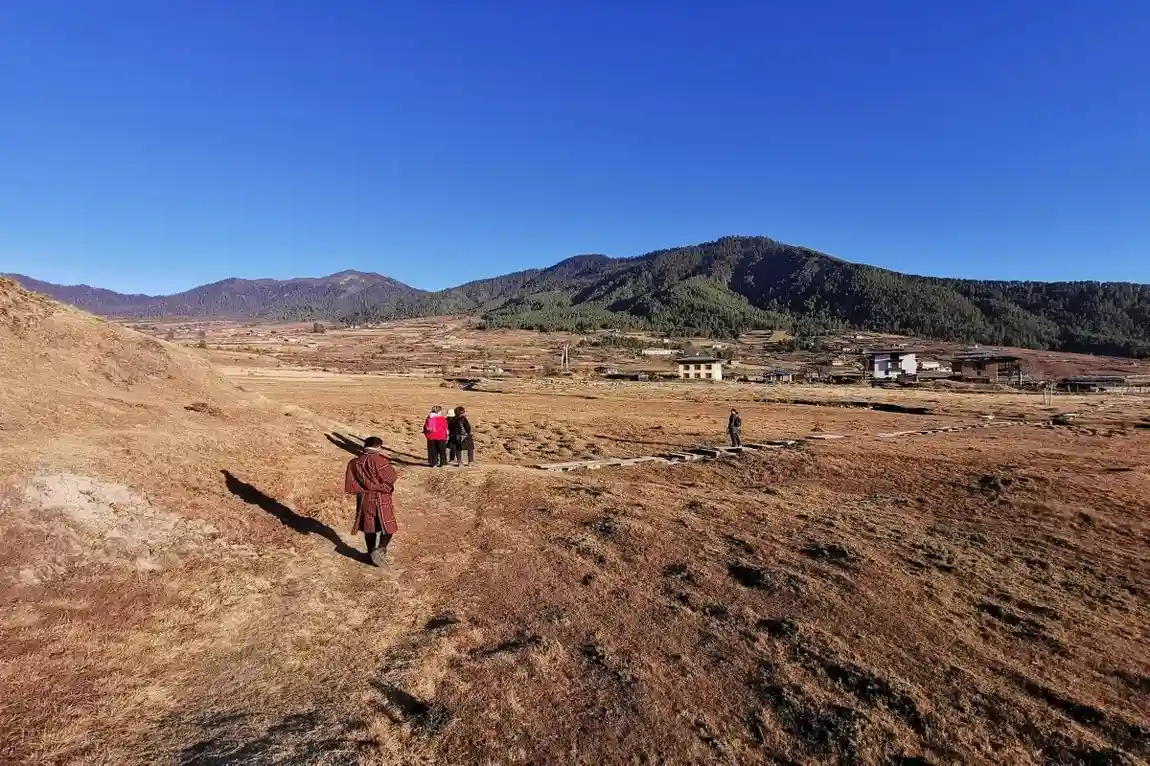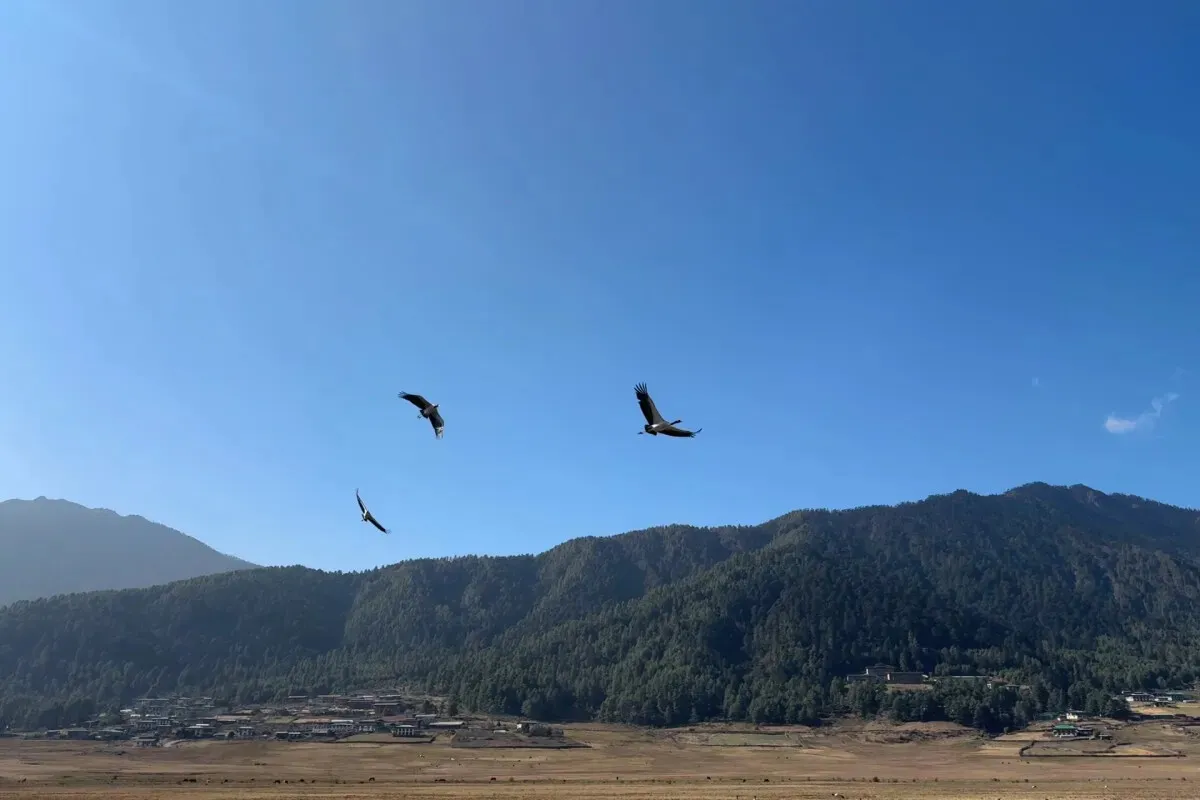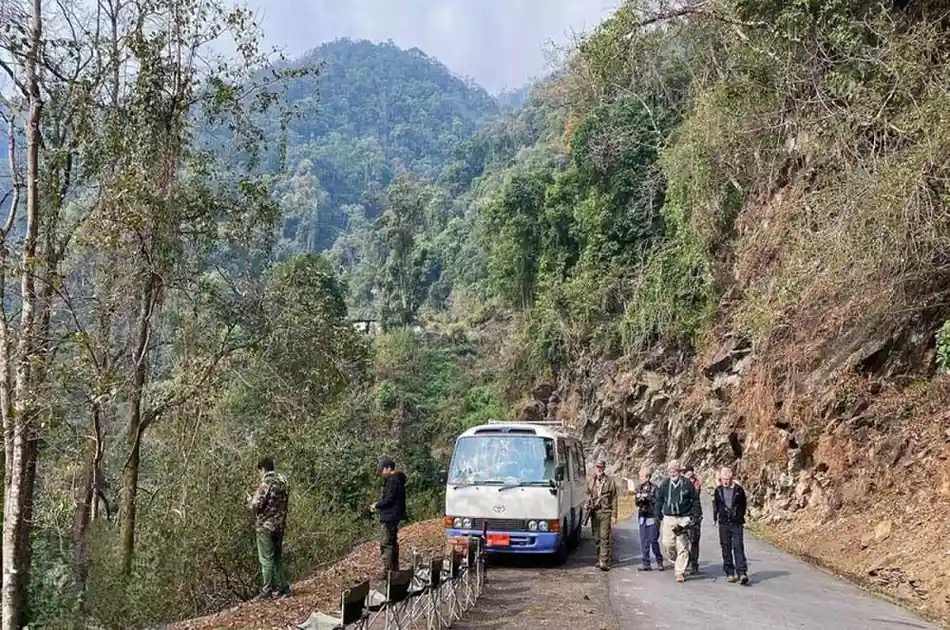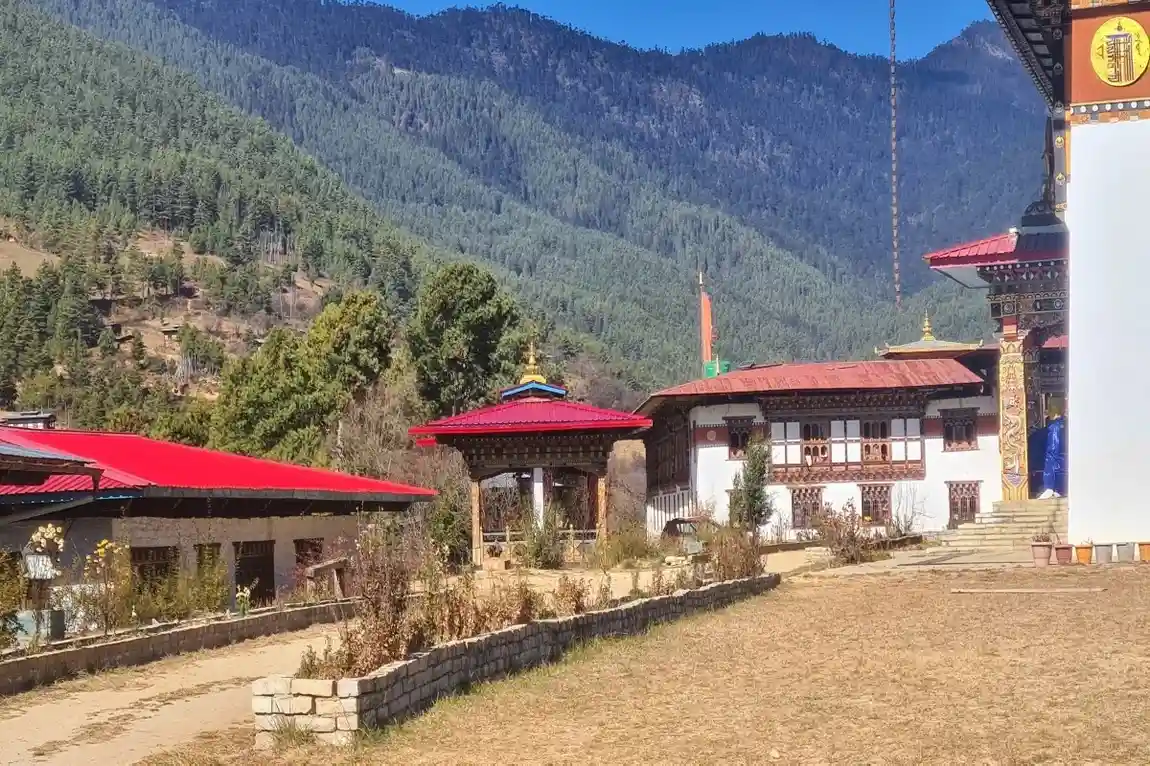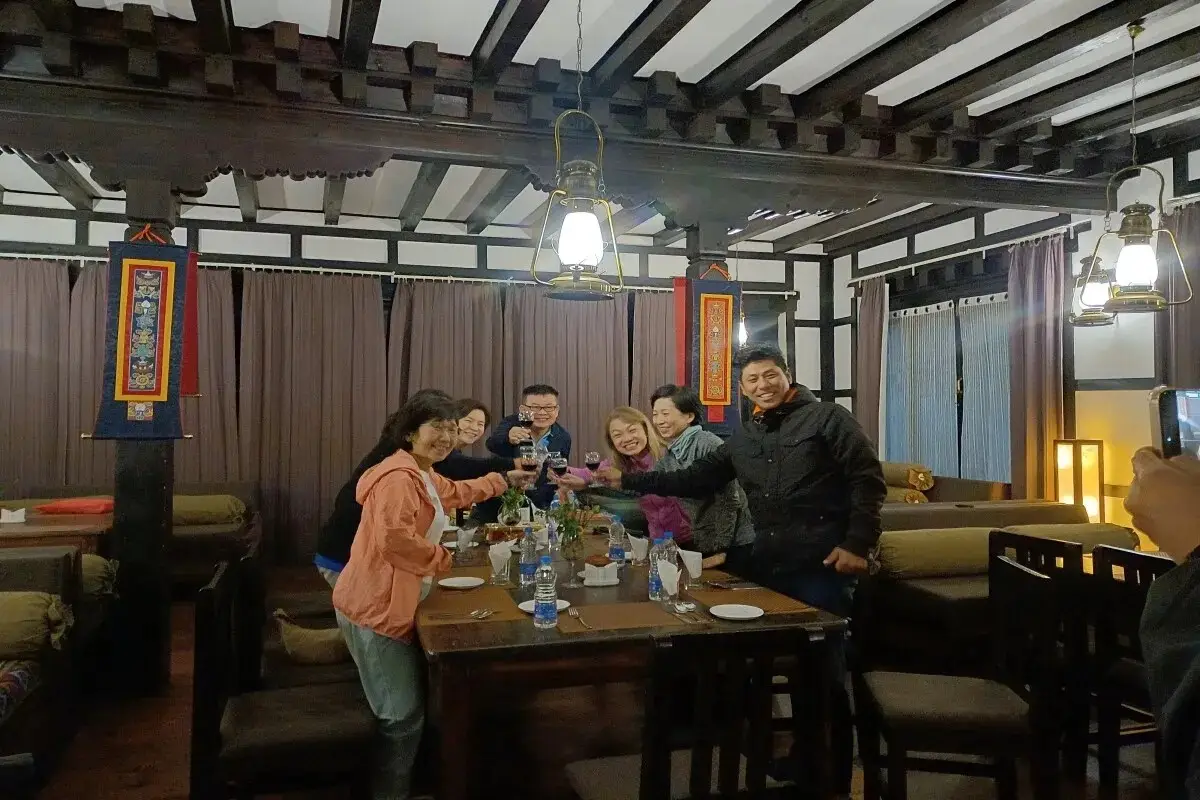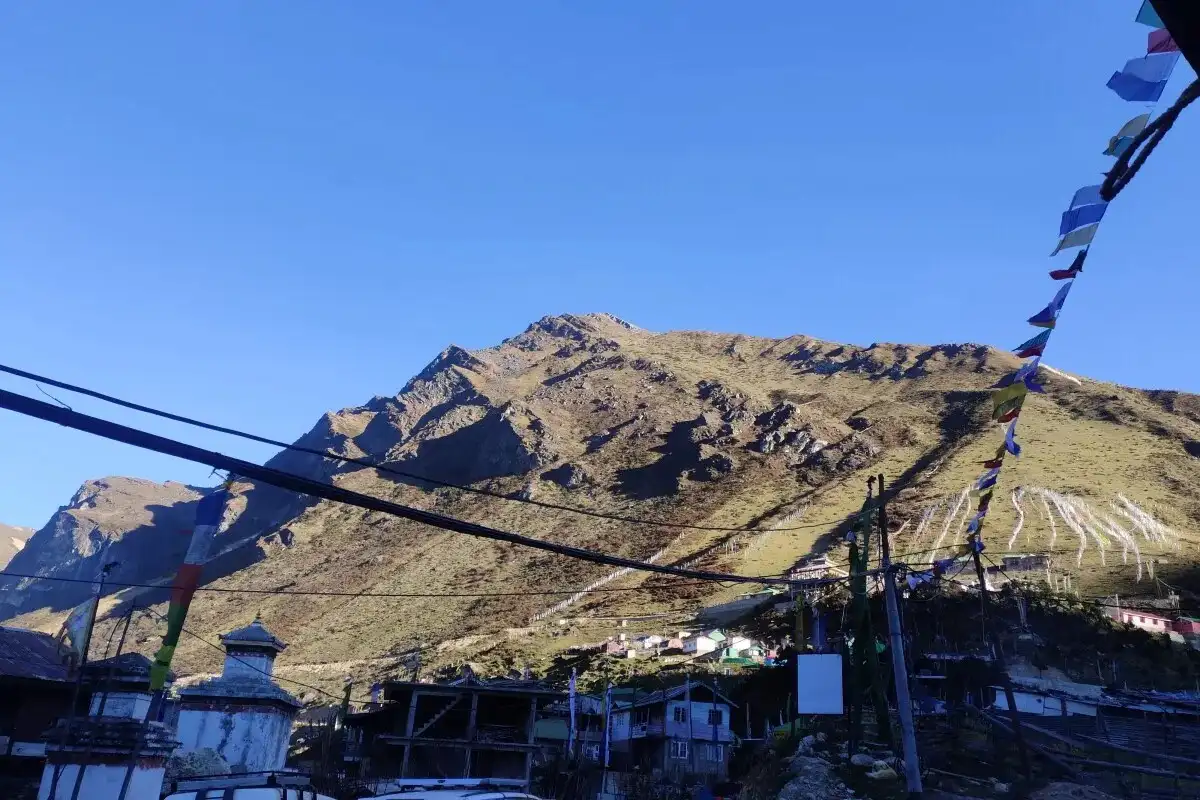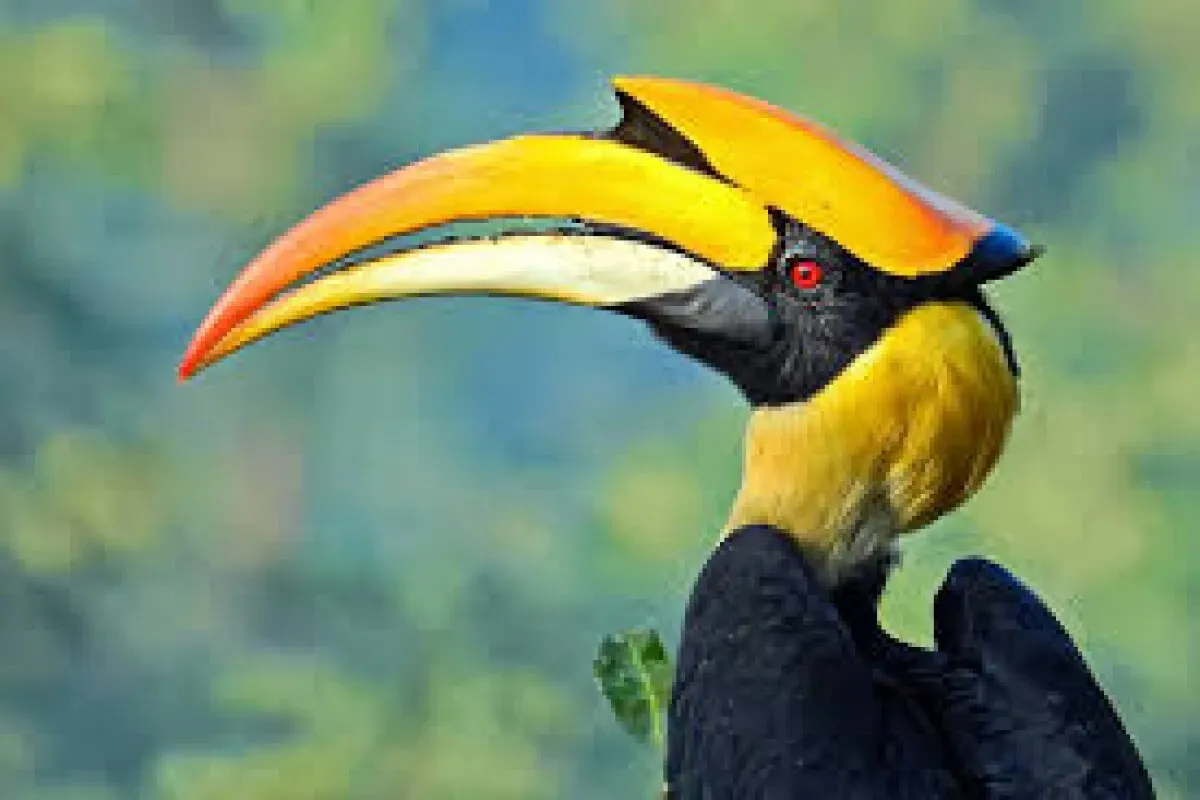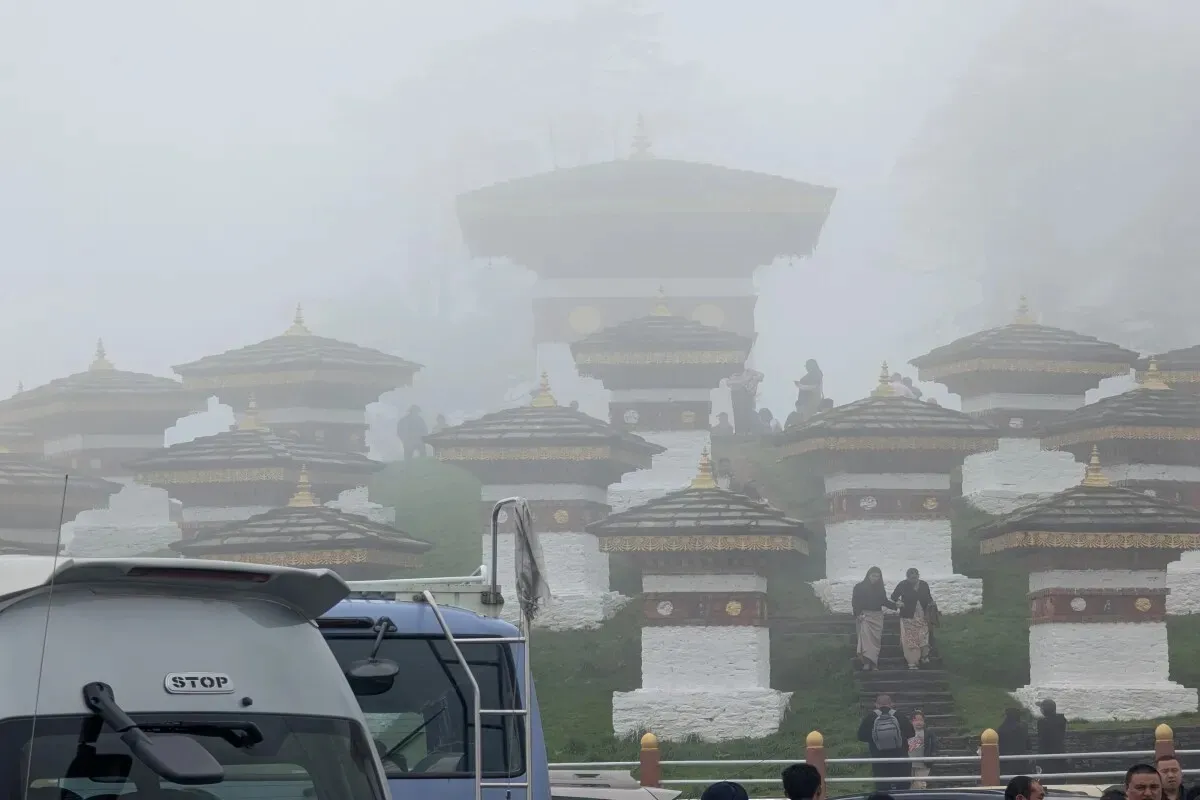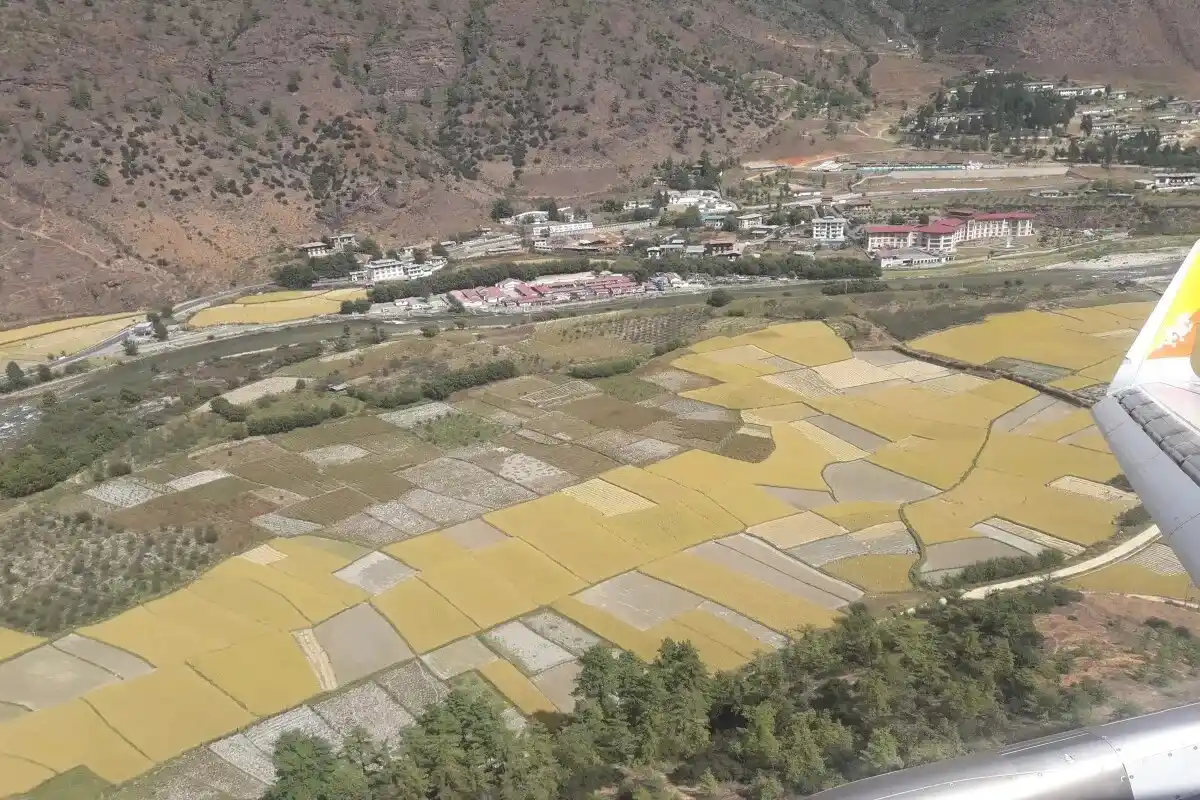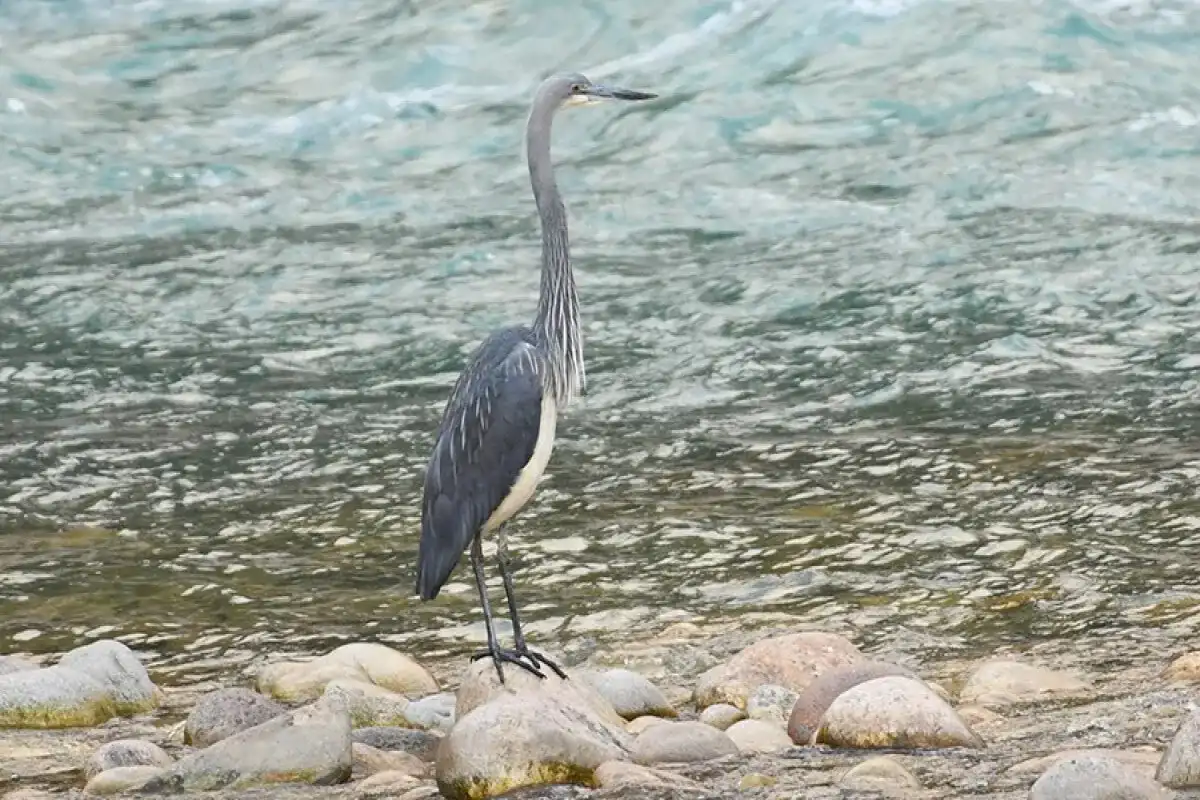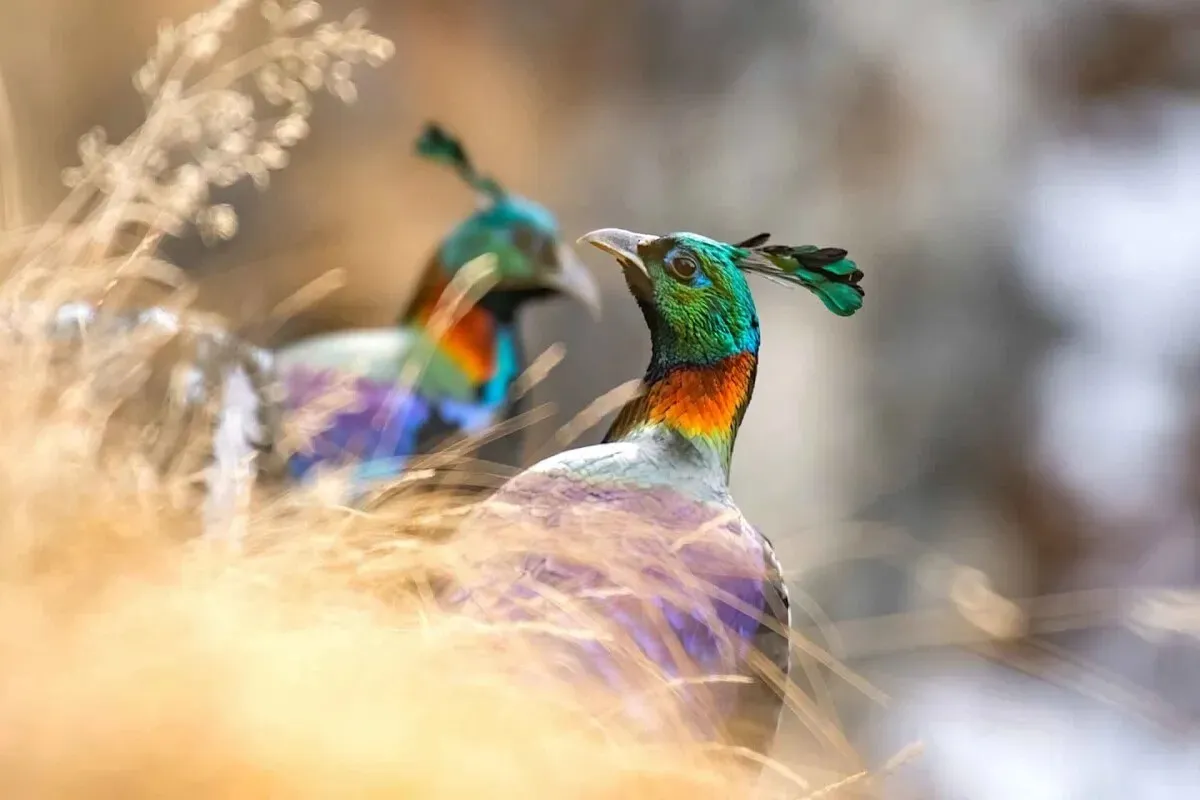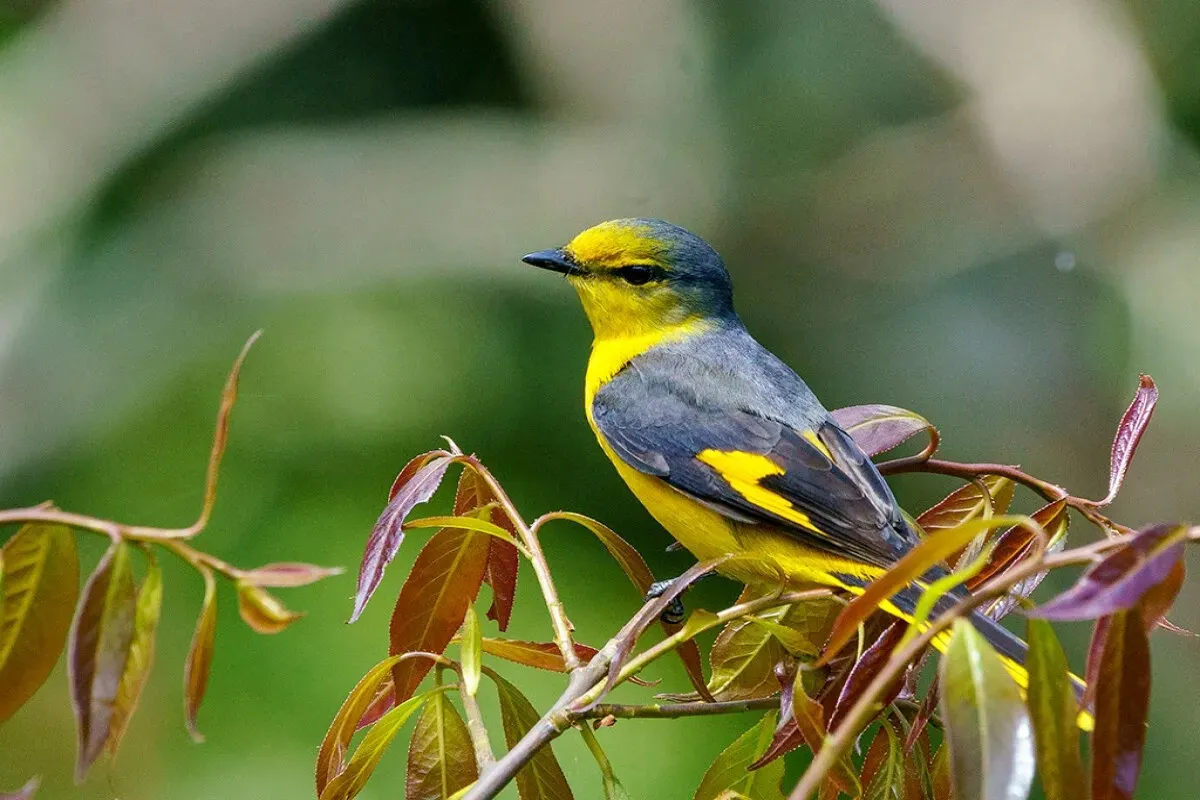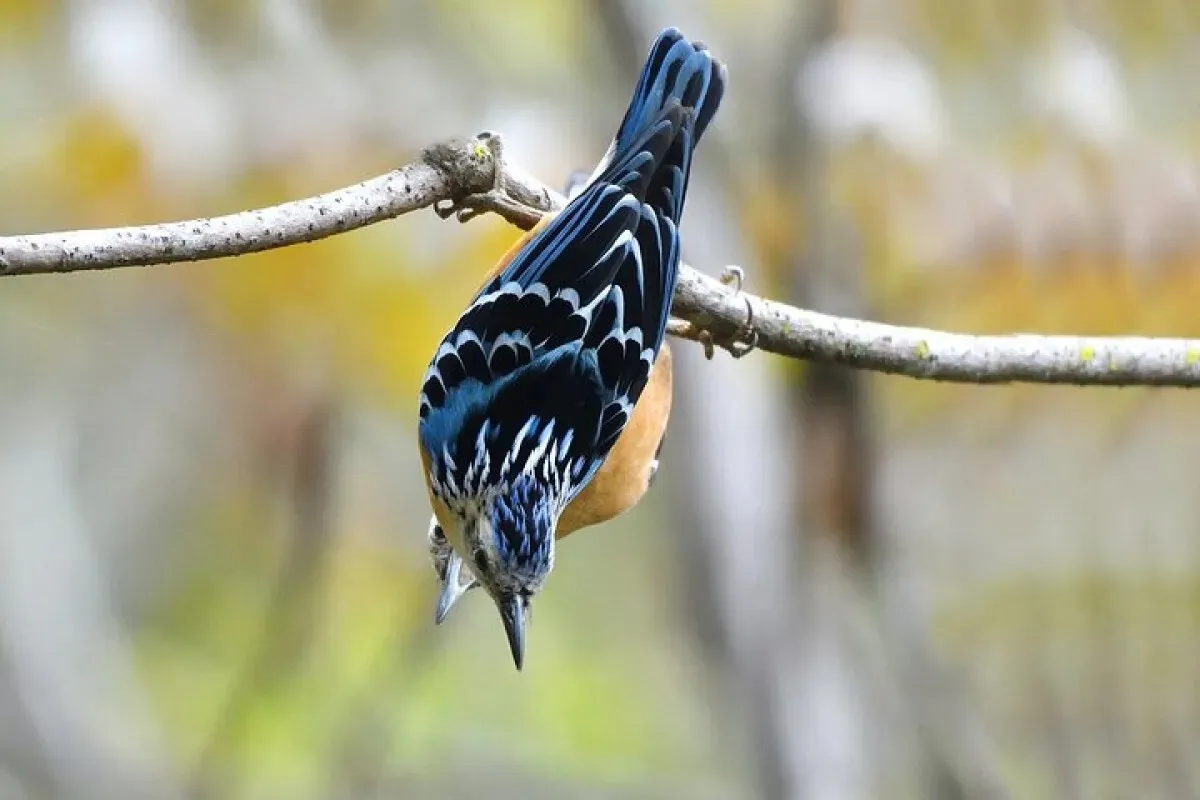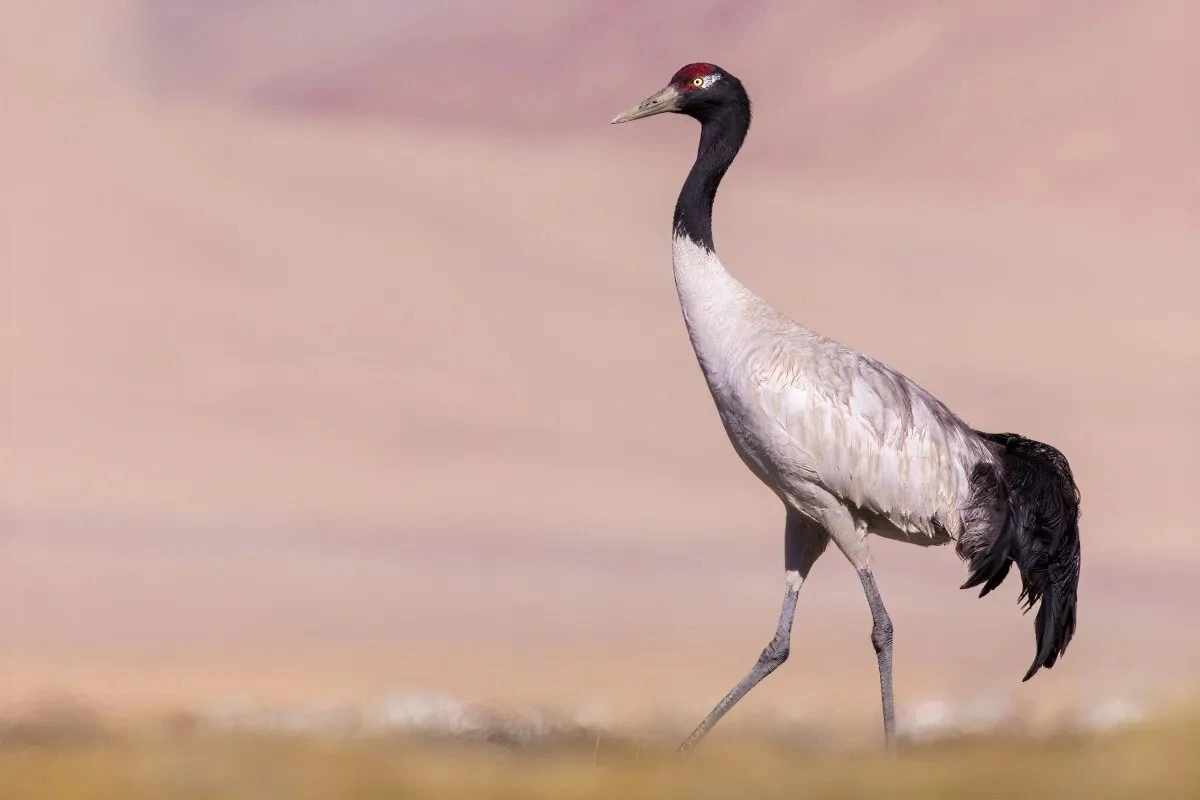Bhutan Hornbill Adventure - 7 Days
The 7-Day Bhutan Hornbill Adventure is a special tour for nature lovers, birdwatchers, and those who prefer quiet forests and wildlife. This tour will take you right into the heart of beautiful valleys, lush tropical jungles, and calm mountain villages in Bhutan. The focus of the trip is to see the amazing hornbill in Bhutan, especially the rare Rufous-necked Hornbill and the colorful Great Hornbill. These birds are not only beautiful but also very important for the forest and Bhutan’s natural balance.
Highlights of the tour
- Witness the Majestic Rufous-necked and Great Hornbills
- Explore Pristine Subtropical Jungles
- Participate with Conservation Heroes to Protect Bhutan’s Rare Bird Species
- Capture Nature’s Most Colorful Moments
- Immerse in Living Indigenous Traditions
Trip Overview
Over seven days, you will travel through some of Bhutan’s best nature spots like Phobjikha Valley, Gangtey, Lhedi, and Bumthang. Along the way, you’ll also see many other rare birds, butterflies, and maybe even some animals like langurs or deer. You will get to know local guides and conservation heroes who are doing everything they can to preserve these birds and their habitats.
This is an ideal tour for solo travelers, couples, and small groups who wish to experience Bhutan eco travel in a meaningful manner. It is an excellent combination of birding, mellow hikes, and cultural visits. If you’re looking for a peaceful and exciting nature experience, the Bhutan hornbill adventure is the perfect choice.
Highlights of the Tour
This is a 7-day trip, which is not only about birdwatching. It’s a beautiful mix of nature, wildlife, and culture. Every day, new sights, sounds, and experiences await you and make your stay in Bhutan very special. Here are a few of the main highlights of your Bhutan Hornbill Adventure:
Witness the Majestic Rufous-necked and Great Hornbills
The main attraction of this tour is most definitely the sighting of the rare Rufous-necked Hornbill and the massive, colorful Great Hornbill. You can usually find these birds in the forest, flying around or sitting up in the trees. They attract attention easily with their bright colors, strong beaks, and loud calls, which are fun to capture in photographs. An encounter with hornbills in their natural habitat is like magic and something you will never forget. You’ll visit some of the best places in Bhutan where these amazing birds are found, guided by local experts who know how to find them without disturbing their habitat.
Explore Pristine Subtropical Jungles
Bhutan’s tropical and subtropical forests are full of life and color. You can hear birds singing and the sounds of nature as you take walks down some peaceful jungle trails. These are jungles with hundreds of rare birds, including the trogons, parrotbills, and barbets. The forests are pure, fresh, and full of surprises. At every step, one can see something different. Besides being beautiful, these jungles are vital for Bhutan's rich biodiversity.
Participate with Conservation Heroes to Protect Bhutan’s Rare Bird Species
You can have a chance to meet the real heroes behind Bhutan’s bird conservation work. You will meet local guides, bird experts, and community members who have been trying hard every day to conserve hornbills and other rare bird species. They will tell their stories, hardships, and achievements to you. By joining this tour, you also support their work directly. It’s a great way to learn about the challenges birds face and how local people are helping them survive. Your tour contributes to creating awareness and the preservation of the natural treasures of Bhutan as a heritage for future generations.
Capture Nature’s Most Colorful Moments
If you love nature photography, this tour is a dream come true. From the early morning mist in the valleys to bright feathers of hornbills and sunbirds, every place has something spectacular to be captured. You can take capture pictures for a memoryand there are many other moments to be enjoyed. Bhutan is the place that provides ideal conditions to take beautiful photos due to its clean air, soft light, and peaceful setting. You will be at the right time and right place with the assistance of local guides to witness the beauty of birds, forests, and mountain views.
Immerse in Living Indigenous Traditions
During the trip, you will encounter villages of people living in the traditional style. You will find wooden houses, bright prayer flags, and smiling locals greeting you with tea. Culture and nature are inseparable in Gangtey, Lhedi, and others. You’ll learn about Bhutanese customs, farming, food, and beliefs. It’s a chance to understand how nature and culture are closely connected in Bhutan. Such experiences will help you to look at the inner aspect of the country and admire its calm and community-oriented lifestyle.
Nature, Birds & Tropical Forests Along the Journey
Bhutan is a heaven for both bird enthusiasts and nature lovers. During this 7-day tour, you will explore a variety of tropical and subtropical forests filled with birds and the peaceful greenery. Even the forests are alive with sounds- the hornbills calling, the slight buzzing of the insects, and the rustling leaves.
While the main factors of the tour are the Rufous-necked Hornbill and Great Hornbill, you’ll also see many other colorful birds like Wreathed Hornbills, trogons, barbets, and parrotbills. Himalayan Monals, Blood Pheasants, Satyr Tragopans, and Ward’s Trogon are found in the higher forests. Wetlands and riverbanks offer chances to see birds like the Slaty-backed Forktail and Fire-tailed Myzornis.
Every forest has its beauty and secrets. There are dense tropical areas and some that are open and quiet, perfect for watching birds. These are not only bird habitats, but also the core of Bhutan’s biodiversity and the ideal place to connect with nature.
Significance of Hornbills in Bhutan
Hornbills are not only beautiful birds in Bhutan, but they are also a symbol of life, strength, and the close relationship that exists between nature and culture. They are recognizable due to their big beaks, colorful feathers, and loud calls, but far more important than appearance is their true value.
In the forests of Bhutan, hornbills play an important role. They eat fruits and help spread seeds across the jungle, which keeps the forest healthy and growing. In their absence, many of the trees would not grow naturally. That’s why they are called “farmers of the forest.”
Culturally, hornbills are regarded to be sacred and powerful. In some local beliefs, they represent long life and good luck. Many Bhutanese people feel a deep respect for these birds and work hard to protect them.
Sadly, hornbills are becoming rare because of forest loss. Bhutan’s efforts to protect them through conservation and local education are helping these amazing birds survive. Seeing a hornbill in the wild is a special reminder of how nature, people, and tradition are all connected.
When Is the Best Time to Join This Tour?
The best time to join the Bhutan Hornbill Adventure is during spring (March to May) and autumn (October to early December). These months are ideal to enjoy birdwatching, since the weather is clear, warm, and plenty of bird activities.
In spring, the forests come alive. Trees are full of blossoms, and birds are easy to spot as they call, feed, and nest. Hornbills and many other colorful species are very active during this time.
Autumn is just as lovely. After the monsoon, the skies are clear, and the forest path is dry and easy to walk. This season too offers excellent lighting to take photographs and nice and calm views of the valleys.
These times avoid the heavy rains of summer and the cold of winter, giving you the most comfortable and enjoyable experience. Whether you're a nature lover , birdwatcher or a photography enthusiasts, these seasons will be perfect to explore the beauty and its beautiful birdlife.
Over seven days, you will travel through some of Bhutan’s best nature spots like Phobjikha Valley, Gangtey, Lhedi, and Bumthang. Along the way, you’ll also see many other rare birds, butterflies, and maybe even some animals like langurs or deer. You will get to know local guides and conservation heroes who are doing everything they can to preserve these birds and their habitats.
This is an ideal tour for solo travelers, couples, and small groups who wish to experience Bhutan eco travel in a meaningful manner. It is an excellent combination of birding, mellow hikes, and cultural visits. If you’re looking for a peaceful and exciting nature experience, the Bhutan hornbill adventure is the perfect choice.
Highlights of the Tour
This is a 7-day trip, which is not only about birdwatching. It’s a beautiful mix of nature, wildlife, and culture. Every day, new sights, sounds, and experiences await you and make your stay in Bhutan very special. Here are a few of the main highlights of your Bhutan Hornbill Adventure:
Witness the Majestic Rufous-necked and Great Hornbills
The main attraction of this tour is most definitely the sighting of the rare Rufous-necked Hornbill and the massive, colorful Great Hornbill. You can usually find these birds in the forest, flying around or sitting up in the trees. They attract attention easily with their bright colors, strong beaks, and loud calls, which are fun to capture in photographs. An encounter with hornbills in their natural habitat is like magic and something you will never forget. You’ll visit some of the best places in Bhutan where these amazing birds are found, guided by local experts who know how to find them without disturbing their habitat.
Explore Pristine Subtropical Jungles
Bhutan’s tropical and subtropical forests are full of life and color. You can hear birds singing and the sounds of nature as you take walks down some peaceful jungle trails. These are jungles with hundreds of rare birds, including the trogons, parrotbills, and barbets. The forests are pure, fresh, and full of surprises. At every step, one can see something different. Besides being beautiful, these jungles are vital for Bhutan's rich biodiversity.
Participate with Conservation Heroes to Protect Bhutan’s Rare Bird Species
You can have a chance to meet the real heroes behind Bhutan’s bird conservation work. You will meet local guides, bird experts, and community members who have been trying hard every day to conserve hornbills and other rare bird species. They will tell their stories, hardships, and achievements to you. By joining this tour, you also support their work directly. It’s a great way to learn about the challenges birds face and how local people are helping them survive. Your tour contributes to creating awareness and the preservation of the natural treasures of Bhutan as a heritage for future generations.
Capture Nature’s Most Colorful Moments
If you love nature photography, this tour is a dream come true. From the early morning mist in the valleys to bright feathers of hornbills and sunbirds, every place has something spectacular to be captured. You can take capture pictures for a memoryand there are many other moments to be enjoyed. Bhutan is the place that provides ideal conditions to take beautiful photos due to its clean air, soft light, and peaceful setting. You will be at the right time and right place with the assistance of local guides to witness the beauty of birds, forests, and mountain views.
Immerse in Living Indigenous Traditions
During the trip, you will encounter villages of people living in the traditional style. You will find wooden houses, bright prayer flags, and smiling locals greeting you with tea. Culture and nature are inseparable in Gangtey, Lhedi, and others. You’ll learn about Bhutanese customs, farming, food, and beliefs. It’s a chance to understand how nature and culture are closely connected in Bhutan. Such experiences will help you to look at the inner aspect of the country and admire its calm and community-oriented lifestyle.
Nature, Birds & Tropical Forests Along the Journey
Bhutan is a heaven for both bird enthusiasts and nature lovers. During this 7-day tour, you will explore a variety of tropical and subtropical forests filled with birds and the peaceful greenery. Even the forests are alive with sounds- the hornbills calling, the slight buzzing of the insects, and the rustling leaves.
While the main factors of the tour are the Rufous-necked Hornbill and Great Hornbill, you’ll also see many other colorful birds like Wreathed Hornbills, trogons, barbets, and parrotbills. Himalayan Monals, Blood Pheasants, Satyr Tragopans, and Ward’s Trogon are found in the higher forests. Wetlands and riverbanks offer chances to see birds like the Slaty-backed Forktail and Fire-tailed Myzornis.
Every forest has its beauty and secrets. There are dense tropical areas and some that are open and quiet, perfect for watching birds. These are not only bird habitats, but also the core of Bhutan’s biodiversity and the ideal place to connect with nature.
Significance of Hornbills in Bhutan
Hornbills are not only beautiful birds in Bhutan, but they are also a symbol of life, strength, and the close relationship that exists between nature and culture. They are recognizable due to their big beaks, colorful feathers, and loud calls, but far more important than appearance is their true value.
In the forests of Bhutan, hornbills play an important role. They eat fruits and help spread seeds across the jungle, which keeps the forest healthy and growing. In their absence, many of the trees would not grow naturally. That’s why they are called “farmers of the forest.”
Culturally, hornbills are regarded to be sacred and powerful. In some local beliefs, they represent long life and good luck. Many Bhutanese people feel a deep respect for these birds and work hard to protect them.
Sadly, hornbills are becoming rare because of forest loss. Bhutan’s efforts to protect them through conservation and local education are helping these amazing birds survive. Seeing a hornbill in the wild is a special reminder of how nature, people, and tradition are all connected.
When Is the Best Time to Join This Tour?
The best time to join the Bhutan Hornbill Adventure is during spring (March to May) and autumn (October to early December). These months are ideal to enjoy birdwatching, since the weather is clear, warm, and plenty of bird activities.
In spring, the forests come alive. Trees are full of blossoms, and birds are easy to spot as they call, feed, and nest. Hornbills and many other colorful species are very active during this time.
Autumn is just as lovely. After the monsoon, the skies are clear, and the forest path is dry and easy to walk. This season too offers excellent lighting to take photographs and nice and calm views of the valleys.
These times avoid the heavy rains of summer and the cold of winter, giving you the most comfortable and enjoyable experience. Whether you're a nature lover , birdwatcher or a photography enthusiasts, these seasons will be perfect to explore the beauty and its beautiful birdlife.
Short Itinerary
Arrive in Paro – Gentle walk along riverbank for birding and acclimatization
Drive to Phobjikha via Dochula Pass – Spot birds and visit Gangtey Monastery
Full-day birdwatching in Phobjikha – Forest trails and crane spotting
Trek from Gangtey to Lhedi – Birding, village walk and local culture
Drive to Bumthang – Scenic birding stops along mountain passes
Explore Tang Valley – Search for rare hornbills and visit Burning Lake
Return to Paro – Leisure, shopping, farewell and departure
Bhutan Hornbill Adventure Itinerary
Welcome to Bhutan! After arriving at Paro International Airport, you’ll be greeted by your local guide. It is a perfect gentle walk on the first day to acclimatize you to the altitude, as well as viewing birds such as the Plumbeous Redstart, the White-capped Water Redstart, and the Himalayan Bulbul. You may also spot the rare Ibisbill, which is a much-desired bird-watching experience. The setting is peaceful, with cool mountain air and river sounds all around. After birding, enjoy a warm Bhutanese dinner and get to know your group. Your guide will give a short briefing about the week ahead. It is a gentle, lovely beginning of your journey, in which you are surrounded by nature and the beauty of Paro Valley. Sleep well tonight-the actual journey starts tomorrow.
After breakfast, your journey will begin towards the Phobjikha Valley, which is one of the most beautiful valleys of Bhutan. You will also go through the famous Dochula Pass, which has 108 chortens and beautiful views of the Himalaya. Fire-tailed Sunbirds, Spotted Laughingthrushes, and Yuhinas are all likely to be seen. After a few photo stops and tea breaks, continue down into the green and open valley of Phobjikha. In the afternoon, you will be able to visit the peaceful, historical monastery of Gangtey. Next, enjoy a relaxing walk in the wetlands of the valley, which have Black-necked Cranes (in season) and other wetland birds. The wide-open space, fresh air, and the silence of the beauties make this place magical. Spend a relaxing night at a traditional guesthouse or eco-Lodge. End the day with a hot meal and exchange stories and sightings of birds with your fellow travellers.
Today is all about birds and nature. After breakfast, have a walk around the alpine forests and meadows around Phobjikha to spend a whole day birdwatching. These forests are home to species like the Satyr Tragopan, Blood Pheasant, White-collared Blackbird, and many types of bush warblers. There will be your guide to help you spot and identify each bird. Also you'll walk through rhododendron forests, open fields, and small streams, with chances to see raptors like Himalayan Griffons soaring above. If you’re visiting in winter, this is also a great time to see Black-necked Cranes peacefully feeding in the valley. Take breaks to enjoy the mountain views and a packed lunch in nature. This is a calm, rich day full of birdlife and fresh air. Return to your lodge in the evening, where you dine and discuss the day's sightings and stories.
Have breakfast and prepare yourself to experience the real adventure going through the forest and traditional paths hiking toward Lhedi Village. The trek today is moderate and peaceful, and it involves a walk through mixed forests with birdsong and pine smell. Along the way, your guide will help you look for woodland birds like Woodpeckers, Raptors, Laughingthrushes, and even hornbills in the distance. You will find yourself walking in beautiful farms and witness how people live in harmony with nature. Visit the local family and have tea with them, hear their life, their farming method, and their beliefs. This connection to the community is a big part of the journey. Lhedi is a quiet place and is surrounded by nature- perfect to spend a relaxed evening birdwatching. You may see birds through your window or hear their call in the evening. Local and simple dinner is served with warmth. After a hectic day,sleep quiet and rest well.
You are travelling east today to the religious centre of Bhutan, Bumthang. It is approximately a 5-hour trip, yet there are several scenic stops and birdwatching opportunities. As you go, you will also pass through mountain passes and forests inhabited by species such as Himalayan Monal, Snow Pigeon, and Slaty-blue Flycatcher. Your guide will show you good birding spots, and you will have to take frequent short walks and photographs. Enjoy a picnic outdoors with nature. As you descend into the broad Bumthang Valley, the scenery opens into wide fields, pine-covered hills, and traditional houses. You can walk around the valley or rest in your hotel in the evening. Bumthang also has temples and small monasteries that offer a deep sense of calm and history. After dinner, recall the day’s bird sightings and get ready for the next exciting day of hornbill hunting in nearby forests.
Today, go way up into the Tang Valley, one of the most peaceful and untouched places of Bumthang. It is a secret valley with dense forest, and is a place where one can see the rare Rufous-necked Hornbill. Your journey will get started with a relaxing drive and followed by a walk along forest paths where hornbills can be easily spotted above the treetops. Other birds in this area include Ward’s Trogon, Chestnut-breasted Partridge, and various babblers. The place also includes the holy Burning Lake (Mebar Tsho), a peaceful religious site with clear water and fluttering prayer flags. You will spend most of the day in the forest, listening, looking, and experiencing nature at its best. Go back to your lodge in Bumthang in the evening with quiet joy and awesome memories.
Your journey has a complete circle today. Have breakfast and you will drive back to Paro. It’s a long but scenic drive, with a chance to stop at favorite birding spots from earlier in the tour or enjoy a peaceful walk and some last-minute photos. You may want to revisit Dochula Pass or spend a little time in the Motithang forest if time allows. In Paro, you can have a relaxed moment, purchase souvenirs, or even enjoy some warm tea. Your guide will assist with all last-minute preparations and make sure that your transfer to the airport is safe. When you are flying out of Bhutan, look out the window to see the beautiful green forests and deep valleys you have been to. You have not only watched wonderful birds but also have assisted in their preservation. This journey does not just give you memorable pictures, but it gives you a strong feeling towards nature and the peace that Bhutan provides.
Know Before You Travel
-
Places you will visit:
This 7-day Bhutan Hornbill Adventure takes you through some of the country’s most beautiful birding and cultural spots. One of the top highlights is the Royal Manas National Park, Bhutan’s oldest national park, known for its rich wildlife and tropical bird species. You will also visit the green Sarpang lowlands, where hornbills and other colorful nature birds will usually be seen flying through the canopy.
The peaceful Motithang forest in the west of Thimphu is a quiet bird place to see Himalayan species as well as local birding. Throughout the journey, you’ll visit traditional villages like Lhedi and Tang Valley, where you can enjoy Bhutanese culture, meet friendly locals, and explore local life up close.
The tour becomes even more beautiful because it is comprised of such scenic locations as Dochula Pass and Phobjikha Valley with their forests, monasteries, and wide-open views. Each place on this tour gives you a perfect mix of nature, birds, and authentic Bhutanese experiences.
FAQs for Bhutan Hornbill Adventure
The most beautiful and rare ones you will be able to see on this tour are the Rufous-necked hornbill and the Great hornbill. You may even be fortunate to see another bird, the Wreathed Hornbill, in some areas.
Absolutely! This tour is perfect for every nature lover, whether you are a beginner or an experienced person. Our guides will help you learn how to spot birds and understand their behaviors.
It’s a good idea to bring your binoculars and camera if you have them. Certain equipment can be borrowed, although it is better when you have your own.
Yes, all locations are safe and guided by local birding experts and conservationists. They know the terrain and wildlife well and ensure your safety and comfort.
You’ll stay in eco-lodges, forest guesthouses, and comfortable local hotels. The rooms are neat, warm, and close to nature- a night of relaxation after a day outdoors.
Yes! Solo travelers are welcome, and many nature lovers prefer small group settings.
Most hikes are easy to moderate. You’ll walk through forest trails and gentle slopes, with plenty of breaks.
Yes! You may also spot monkeys, deer, butterflies, and even elephants or rare wildcats in some areas.
You need a visa and all necessary permits for your trip. These documents can not be received on the day of your arrival, so they must be processed before coming here. After you book a trip with us, we will manage these papers for you. Your Bhutan visa is arranged by Orrog as part of the package.
The main way to come to Bhutan is through Paro International Airport, which is well-connected to cities like Bangkok, Delhi, Kathmandu, and Singapore. Most people arrive by air, but if you plan to come via road, you can enter through Phuentsholing, located on the southern border with India, which is the most commonly used entry point.
It is recommended to apply for the visa at least 20 days before your planned departure date so that there is enough time for processing your Bhutan visa, finalizing your itinerary, and arranging your guides and transportation. Although visa processing itself is relatively fast once payment is received, early preparation helps avoid delays and ensures availability, especially during peak seasons (spring and autumn).
You don’t require a passport-size photo for the visa, but it is wise to carry at least 2–4 recent passport-sized photographs during your trip. These may be needed for local permits, registration, or when applying for a local SIM card upon arrival in Bhutan.
Yes, you can lengthen your stay in Bhutan either before or after your trip. Bhutan’s tourism model requires visitors to pay a Sustainable Development Fee (SDF) and a daily package cost, so any extra days will involve additional charges. Extensions are a great opportunity to explore cultural sites in Paro, Thimphu, or even add another short trip or day hike.
Yes, Bhutan requires full tour payment in advance before your visa can be processed and issued. The government of Bhutan regulates this policy to ensure that all travel arrangements are confirmed through a licensed Bhutanese tour operator. We are a licensed tour operator that ensures you have everything you need for a trouble-free trip.
Any personal expenses are not covered in the package like:
- Tips for your guide and other staff
- Bottled drinks and snacks(personal expense)
- Souvenirs or local crafts
Credit cards are easily accepted in major cities like Paro and Thimphu. But in remote areas, you may not have access to a card or an ATM. So, it is best to carry some cash before heading for the trip.
Tipping is not mandatory, but it is a widely appreciated gesture and a customary way to show gratitude for good service. The tipping guideline would be to give USD 5-10 per day as a tip for the guides and other staff.
Paro International Airport is the only international airport in Bhutan. It is well connected by flights from cities like Bangkok, Delhi, Kathmandu, and Singapore.
Yes, airport pick-up and drop-off are included in the package. We will have your guide and driver meet you at the airport and transport you to your hotel.
While Bhutan's roads are mostly paved, some parts are narrow, winding, and occasionally affected by weather. However, we ensure your travel is safe, well-maintained, and driven by an experienced professional throughout the journey.
The Bhutanese Ngultrum is used in Bhutan. All local transactions during the trip will be in BTN.
US Dollars (USD) are generally accepted at larger hotels, souvenir shops, and tour operators, particularly in Paro and Thimphu. However, it’s advisable to convert your currency to BTN for general purchases in rural areas. Other currencies like the Euro or the Pound are not commonly accepted directly.
No, credit or debit cards are not accepted on the trip, as it takes you through remote regions with no banking or electronic payment access. All trip-related payments like accommodation, meals, permits, etc, are paid in advance.
You can exchange foreign currency at the Paro International Airport, at banks, or through licensed money changers in cities like Thimphu and Paro. It's best to exchange enough cash before heading out on the trip.
The national language is Dzongkha, but many Bhutanese also speak English. If you speak English and are worried about communicating with the local people, you will have your guide as a translator.
Yes, all licensed tour guides in Bhutan are required to speak fluent English. Many are also trained in other languages such as German, Japanese, or French. Communication during the trip will be smooth and clear in English.
Most signboards, tourist maps, and information brochures are written in English, especially in tourist destinations like Paro, Thimphu, and trailheads. Directional signs along routes are often labeled in both Dzongkha and English.
No, learning Dzongkha is not at all needed for the trip, but knowing a few basic words like "Kuzu zangpo la" (Hello) or "Kadrinche la" (Thank you) is a good way to interact with the locals.
Language barriers are minimal, as your guide will handle all communication with locals and support staff. Your guide will translate for you during your interaction with the locals.
To greet people, you can greet with locals “Kuzu zangpo la” (Hello) by performing a slight bow. Most common greetings include physical greetings, such as shaking hands less visible, especially in rural areas.
Yes, but remember to seek permission, especially when taking photos of monks, locals, or temples. Please note that clicking photos is not allowed at most religious sites.
Visitors should dress modestly and respectfully. This means:
- Covering shoulders and knees
- Removing hats and sunglasses
- Not wearing shorts or sleeveless tops
This applies to both men and women.
Yes, Bhutanese society is deeply rooted in Buddhism and tradition. Here are some key taboos:
- Do not point your feet at people or sacred objects
- Never touch anyone on the head, as it is considered sacred
- Walk clockwise around temples, stupas, and religious monuments
- Avoid public displays of affection
While gifts are not expected, they may be accepted graciously if given with respect. It is advisable to consult with the guide before giving out anything.
Bhutan typically uses Type C, Type D, and Type G electrical outlets. Standard safe voltage is 230V and frequency is 50Hz; therefore, ensure that your equipment is compatible with this voltage.
Indeed, it is highly advised to take along a universal travel adapter, particularly one to fit a variety of types of plugs, because plugs can be different in a hotel or a guesthouse.
Bhutan follows Bhutan Time (BTT), which is UTC/GMT +6 hours. This time zone remains consistent throughout the year.
No, Bhutan does not observe daylight saving time. The country maintains the same time year-round.
Bhutan is 30 minutes ahead of India. For example, 12:00 PM in India is 12:30 PM in Bhutan.
Yes, souvenirs can be bought in Paro or Thimphu before or after the trip.
Some popular souvenirs include hand-woven textiles (kira and gho fabric), prayer flags, thangka (religious scroll) paintings, handmade paper products, traditional masks, and Buddhist artifacts.
You can do some gentle bargaining in local street markets. However, in government-run shops and fixed-price stores, prices are usually non-negotiable.
Yes, you can easily purchase a SIM card upon arrival in Bhutan. We will assist you with the process, and you'll need a passport copy and a passport-sized photo.
No, internet access is not available during the trip. However, Wi-Fi is available in hotels in Paro and Thimphu before and after the trip.
Reviews & Ratings
-
Guarantee -
Thimphu,Bhutan -
975+17160228
Ready to Explore Bhutan?
Start your journey today and discover the magic of Bhutan with our expert guides and carefully crafted tours.
Book This Trip
-
No booking or credit card fees -
Best price guarantee -
Full customize trip
Ask a Question
Feel free to ask us anything about this tour. A travel expert will then get back to you as soon as possible
Ready to Explore Bhutan?
Start your journey today and discover the magic of Bhutan with our expert guides and carefully crafted tours.

